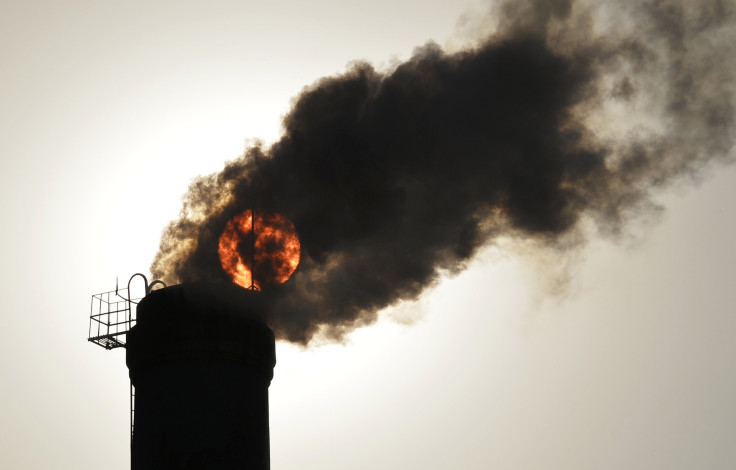Climate Change And Greenhouse Gas Emissions: Who Is The Bigger Polluter, The US Or China?

China can proudly boast it has the world’s largest economy. Meanwhile, the U.S. commands the most powerful military in history. But in the era of climate change, something neither country wants to be known for is the world’s biggest polluter.
Right now, China produces the most carbon dioxide of any country in the world, having surpassed the U.S. in 2007 in terms of sheer volume of carbon it pumps out. Carbon accounts for 57 percent of greenhouse gas emissions and is a key driver of manmade climate change. China spews more than 8,700 million metric tons of carbon dioxide into atmosphere every year, according to estimates from the U.S. Energy Information Administration. The U.S. isn’t far behind with annual carbon emissions around 5,500 million metric tons. Together, the U.S. and China account for over 42 percent of all carbon emissions from fossil fuel combustion and over one-third of all greenhouse gas emissions.
But that’s not the full picture. The U.S. emits nearly three times as much carbon dioxide per capita as China. In terms of overall greenhouse gas emissions, the average American is responsible for over twice as much atmospheric pollution as the average Chinese, according to Inside Climate Change.
While the countries are nearly even in terms of total installed electrical capacities, 80 percent of China’s energy comes from coal, compared to 42 percent in the U.S. China has nearly double the amount of coal plants as the U.S., according to U.S. government numbers.
U.S. President Barack Obama and Chinese President Xi Jinping announced Wednesday a joint pledge to curb carbon emissions over the next 15 years. The U.S. has vowed to cut its 2005 carbon emissions by 26 to 28 percent before the year 2025. China has aimed to get 20 percent of its energy from zero-carbon emission sources by the same year and to start rolling back carbon emissions by 2030.
The leaders’ targets, while ambitious, are not bold enough to stop global warming, climate experts have said.
© Copyright IBTimes 2024. All rights reserved.






















